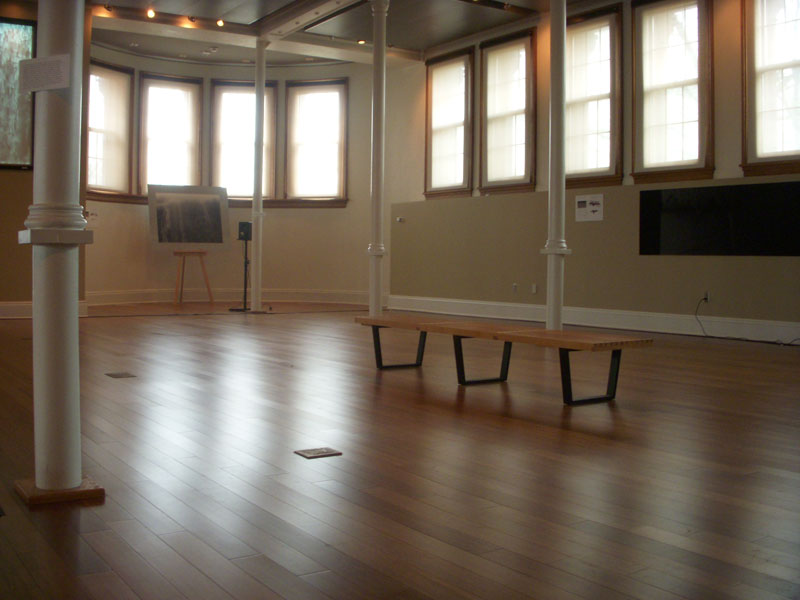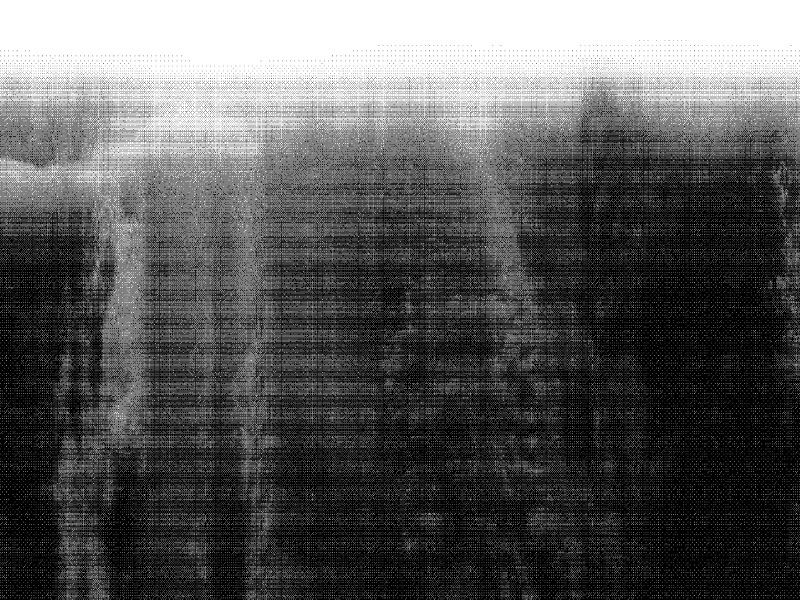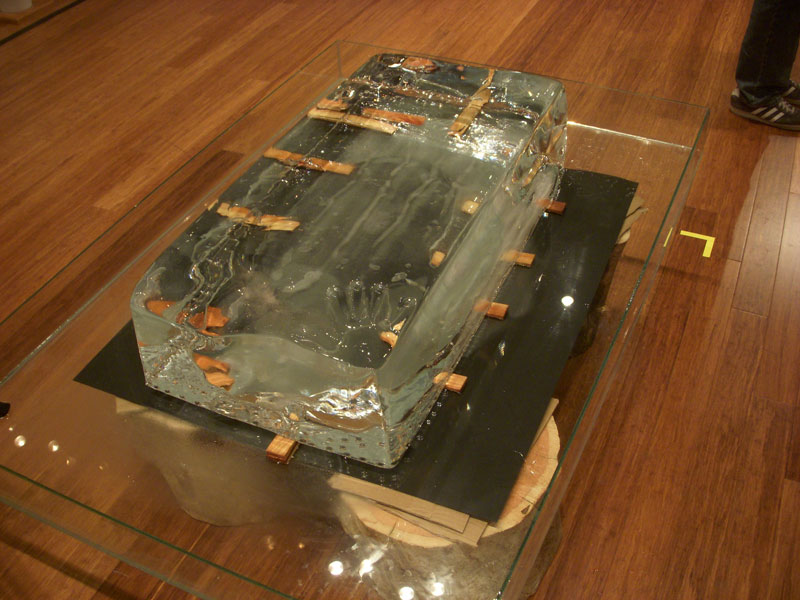





mutatis mutandis
glaciological and atmospheric data renderings and video projection, multi-channel audio
mutatis mutandis (from latin, “by changing those things that need to be changed”) is a multi-sensory installation that uses glaciological data to control an audio and visual environment. A 300-lb block of ice was melted in the center of the space during the course of the exhibition
Using the actual field-recorded sounds of glaciers (such as melting, calving and ice cracking), the computer program maps various sets of data onto different audio parameters in the sound recordings. Among the different types of glaciological data fed into the computer program are ice core analysis,
sea level rise, elevation readings and snow pit data sets recorded by remote sensing equipment. The glacial audio is then subject to several computational algorithms that use these data sets to shape and model the audio components. This includes several types of statistical analysis including stochastic modeling, Fourier analysis and regression analysis. For example, on one of the audio channels, the
data taken from Ice Core Analysis (depicting the Earth’s C02 levels, see Figure 1) is used as the carrier signal in a frequency modulation (FM). The host “information” signal contains the sounds of sonar recorded glacial shifting recorded underwater off the coast of Australia. As the C02 levels vary over time, the frequency of the carrier signal changes, creating temporal crescendos or ritardandos.
ice sheet friction
echogram song
ice cracklings
mutatis mutandis live installation mix
Mutatis Mutandis was a collaboration between Nolan Lem and Tristan Telander
read the press release here: Art installation combines music and visuals with climate change data
about the data
The data sets used in this installation are representative of a wide range of glaciological time frames as depicted in informational graphics located around the hall space. The data was obtained from various places throughout the world including the WGMS (World Glacier Monitoring Service in Switzerland), NOAA (National Oceanic and Atmospheric Administration) and CReSIS (Center for the Remote Sensing of Ice Sheets). The type of data employed in this installation includes glacial mass balance sheet records, ice-core analysis, glacier length changes and glacial imaging.
Mutatis Mutandis was suppored from by grant from the Hall Center for the Humanities, University of Kansas. We would like to thank Michael Zemp from WGMS, Dr. David Braaten at CReSIS, Cheryl Leonard for supplying many of the audio files, Dr. Andrew Gavrilov at the Curtin University of Technology in Perth, Australia for lending his glacial research sounds, Jean-Francois Charles for help with the programming, Dave Millstein and Cotter Mitchel, who prepared the wood logs for the installation, and Emily Ryan at Spooner Hall.
click here to read more about this data sonification project